Do you have a question about the Philips 32PFL3403D/85 and is the answer not in the manual?
Details on display type, screen size, resolution, contrast, and sound specifications.
Details on display type, screen size, resolution, contrast ratio, and viewing angles.
Details on sound systems and maximum power output (WRMS).
Information on power supply, mains voltage, frequency, and ambient conditions.
Details on side and rear connections, including HDMI, AV, S-Video, and USB ports.
PWB locations for 32", 42", 47", and 52" models, identifying main supply and signal boards.
Guidelines for safe repair procedures, including isolation transformers and component replacement.
Precautions regarding electrostatic discharge (ESD) and working with high voltage sections.
General notes on measurements, schematic conventions, BGA ICs, and lead-free soldering.
Explains how to identify the Bill of Materials (BOM) using the serial number.
Guidance on whether to exchange or repair boards, and consequences of non-OEM returns.
Advice on avoiding electrical shock and ensuring proper insulation testing.
Instructions and diagrams for routing internal cables for 32", 42", 47", and 52" models.
Guidance on using foam bars and service stands for easy set servicing.
Step-by-step procedures for removing the back cover, speakers, and panels.
General instructions to reassemble the set in reverse order of disassembly.
Identification and measurement conditions for test points used in diagnostics.
Overview of Service Default Mode (SDM), Alignment Mode (SAM), Customer Mode (CSM), and ComPair.
Information on ComPair and LVDS tools for diagnostics and software upgrades.
Explanation of error codes, their meaning, and how to read/clear the error buffer.
Procedure for diagnosing faults using the front LED blinking sequence.
Tips on software protections, hardware protections, NVM editor, and default values.
Diagrams illustrating the power states and start-up/shut-down sequences.
Instructions for upgrading TV software via USB, including file content and procedures.
Wiring diagram for 32" models, showing connections between major boards.
Wiring diagram for 42" and 47" models, detailing interconnections.
Wiring diagram for 52" models, illustrating the connectivity.
Block diagram illustrating the video signal processing path.
Block diagram showing the audio signal processing path.
Diagram illustrating control and clock signal flows between components.
Layout showing test points on the bottom side of the Small Signal Board.
Diagram showing I2C communication paths between ICs.
Overview of power supply lines and their distribution across the boards.
Circuit diagram for the DC/DC converter section.
Circuit diagram for the tuner and demodulator section.
Circuit diagram for the Class-D amplifier and muting circuit.
Circuit diagram for the MT5382 power and tuner interface.
Circuit diagram for the MT5382 DDR2 SDRAM interface.
Circuit diagram for the MT5382 Flash and NVM interface.
Circuit diagram for the MT5382 LVDS interface.
Circuit diagram for the MT5382 HDMI interface and multiplexer.
Circuit diagram for the MT5382 analog input/output interfaces.
Circuit diagram for the MJC MT8280 power section.
Circuit diagram for the MJC MT8280 DDR2 interface.
Circuit diagram for the MJC MT8280 LVDS interface.
Circuit diagram for the FPGA used in Ambilight control.
Circuit diagram for the ITV Channel Decoder, marked as reserved.
Circuit diagram for the ITV Pro:Idiom, marked as reserved.
Explanation of the Service Reference Protocol (SRP) list symbols and usage.
Top-side layout of the Small Signal Board, divided into four parts.
Layout diagrams for the keyboard control panel, showing copper and character layers.
Circuit diagram for the IR and LED panel, including component details.
Top-side component layout for the IR & LED Panel.
Bottom-side component layout for the IR & LED Panel.
Conditions required for performing electrical adjustments, including power and test probe setup.
Statement that no hardware alignments are foreseen for this chassis.
Procedures for software alignments, including RGB and white tone adjustments.
Information on microprocessor communication with I2C ICs and setting option codes.
Overview of the LC8.1U chassis, key components, and features.
High-level architecture of the LC08SP platform, showing major blocks.
Top view of the Small Signal Board (SSB) showing placement of major modules.
Description of the Power Supply Unit (PSU) and voltages delivered to the chassis.
Explanation of on-board DC-DC converters and the voltages they supply.
Description of the tuner, SAW filter, and demodulator stages for signal reception.
Details on video signal processing performed by the MT5382 processor.
Explanation of audio signal processing within the MT5382 processor.
Description of HDMI receivers, multiplexer, and CEC implementation.
Information on the location and implementation of Ambilight units.
Overview and classification of control signals within the LC08SP platform.
Glossary of abbreviations used throughout the manual.
Internal block diagrams and pin configurations for key ICs.
Details on display type, screen size, resolution, contrast, and sound specifications.
Details on display type, screen size, resolution, contrast ratio, and viewing angles.
Details on sound systems and maximum power output (WRMS).
Information on power supply, mains voltage, frequency, and ambient conditions.
Details on side and rear connections, including HDMI, AV, S-Video, and USB ports.
PWB locations for 32", 42", 47", and 52" models, identifying main supply and signal boards.
Guidelines for safe repair procedures, including isolation transformers and component replacement.
Precautions regarding electrostatic discharge (ESD) and working with high voltage sections.
General notes on measurements, schematic conventions, BGA ICs, and lead-free soldering.
Explains how to identify the Bill of Materials (BOM) using the serial number.
Guidance on whether to exchange or repair boards, and consequences of non-OEM returns.
Advice on avoiding electrical shock and ensuring proper insulation testing.
Instructions and diagrams for routing internal cables for 32", 42", 47", and 52" models.
Guidance on using foam bars and service stands for easy set servicing.
Step-by-step procedures for removing the back cover, speakers, and panels.
General instructions to reassemble the set in reverse order of disassembly.
Identification and measurement conditions for test points used in diagnostics.
Overview of Service Default Mode (SDM), Alignment Mode (SAM), Customer Mode (CSM), and ComPair.
Information on ComPair and LVDS tools for diagnostics and software upgrades.
Explanation of error codes, their meaning, and how to read/clear the error buffer.
Procedure for diagnosing faults using the front LED blinking sequence.
Tips on software protections, hardware protections, NVM editor, and default values.
Diagrams illustrating the power states and start-up/shut-down sequences.
Instructions for upgrading TV software via USB, including file content and procedures.
Wiring diagram for 32" models, showing connections between major boards.
Wiring diagram for 42" and 47" models, detailing interconnections.
Wiring diagram for 52" models, illustrating the connectivity.
Block diagram illustrating the video signal processing path.
Block diagram showing the audio signal processing path.
Diagram illustrating control and clock signal flows between components.
Layout showing test points on the bottom side of the Small Signal Board.
Diagram showing I2C communication paths between ICs.
Overview of power supply lines and their distribution across the boards.
Circuit diagram for the DC/DC converter section.
Circuit diagram for the tuner and demodulator section.
Circuit diagram for the Class-D amplifier and muting circuit.
Circuit diagram for the MT5382 power and tuner interface.
Circuit diagram for the MT5382 DDR2 SDRAM interface.
Circuit diagram for the MT5382 Flash and NVM interface.
Circuit diagram for the MT5382 LVDS interface.
Circuit diagram for the MT5382 HDMI interface and multiplexer.
Circuit diagram for the MT5382 analog input/output interfaces.
Circuit diagram for the MJC MT8280 power section.
Circuit diagram for the MJC MT8280 DDR2 interface.
Circuit diagram for the MJC MT8280 LVDS interface.
Circuit diagram for the FPGA used in Ambilight control.
Circuit diagram for the ITV Channel Decoder, marked as reserved.
Circuit diagram for the ITV Pro:Idiom, marked as reserved.
Explanation of the Service Reference Protocol (SRP) list symbols and usage.
Top-side layout of the Small Signal Board, divided into four parts.
Layout diagrams for the keyboard control panel, showing copper and character layers.
Circuit diagram for the IR and LED panel, including component details.
Top-side component layout for the IR & LED Panel.
Bottom-side component layout for the IR & LED Panel.
Conditions required for performing electrical adjustments, including power and test probe setup.
Statement that no hardware alignments are foreseen for this chassis.
Procedures for software alignments, including RGB and white tone adjustments.
Information on microprocessor communication with I2C ICs and setting option codes.
Overview of the LC8.1U chassis, key components, and features.
High-level architecture of the LC08SP platform, showing major blocks.
Top view of the Small Signal Board (SSB) showing placement of major modules.
Description of the Power Supply Unit (PSU) and voltages delivered to the chassis.
Explanation of on-board DC-DC converters and the voltages they supply.
Description of the tuner, SAW filter, and demodulator stages for signal reception.
Details on video signal processing performed by the MT5382 processor.
Explanation of audio signal processing within the MT5382 processor.
Description of HDMI receivers, multiplexer, and CEC implementation.
Information on the location and implementation of Ambilight units.
Overview and classification of control signals within the LC08SP platform.
Glossary of abbreviations used throughout the manual.
Internal block diagrams and pin configurations for key ICs.


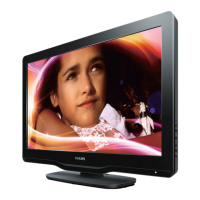



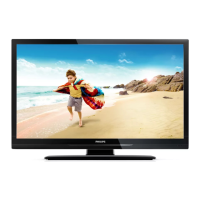
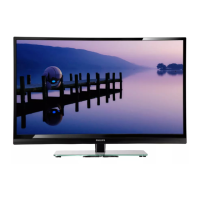
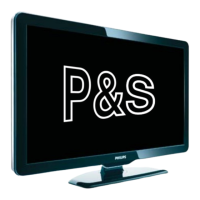
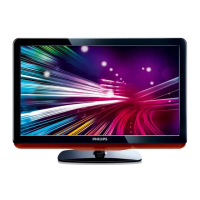
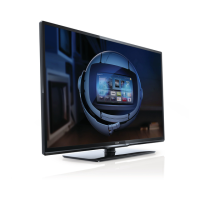
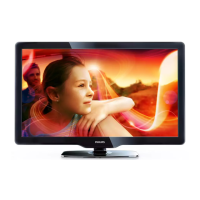
